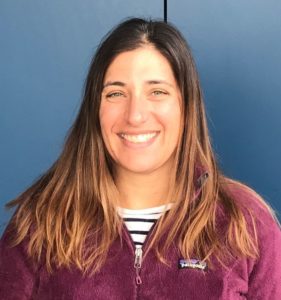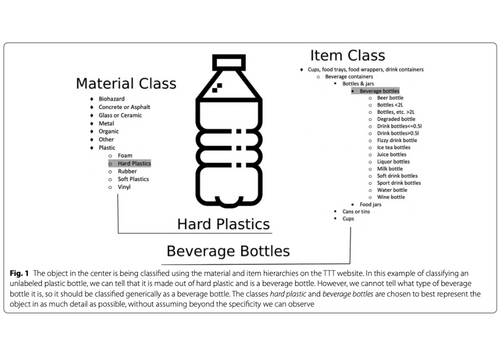Jackie McCloud, Environmental Sustainability Division Manager for Watsonville, CA, was intrigued when her then water quality regulator, Dominic Roques, suggested that she try out some new stormwater software that a local startup, 2NDNATURE, was developing to help MS4 permit holders manage their stormwater more efficiently and effectively. Dominic had funds to support the development of the software to off-set costs to Watsonville and other communities on the Central Coast, and “our city raised our hand,” Jackie says.
“We needed a mapping tool to help us explore our watersheds,” Jackie says. “And help us know where we need to do the most work.”
Dominic funded a pilot project for Watsonville — and other communities on the Central Coast — to try out the software platform, 2NFORM, and Jackie set to work to see what it could do for her team and her community. 2NFORM is a robust cloud based platform that provides intelligent stormwater management and MS4 compliance, and Jackie wanted to see if it could make MS4 compliance easier, and — just as important — help Jackie meet her goal of “protecting water quality” for Watsonville.
“We save cumulatively at least 80 hours over a quarter.”
— Jackie McCloud, Environmental Sustainability Division Manager
Doing More with Less, with 2NFORM

Like many municipalities, Watsonville doesn’t have dedicated stormwater funding or staff. Stormwater management is funded out of the general fund. Jackie and her two full time employees are responsible for five or six different programs, and can only allocate a fraction of their hours to stormwater. She was excited about a tool that could make those precious hours more productive.
When the pilot finished, Jackie had all the proof she needed and Watsonville became another satisfied 2NFORM customer. Today, she can’t imagine doing stormwater management without it. “2NFORM saves so much time for my team,” Jackie says. “We don’t have to constantly go out and do water monitoring. It allows us to put more resources toward other projects.”
Jackie and her team use two modules in 2NFORM, Trash and Structural BMPs. The modular software is designed to help municipalities meet all of their MS4 compliance and clean water needs, and these were Watsonville’s biggest challenges.
Keeping Structural BMPs Well Maintained
Watsonville has just six public Structural BMPs (SBMPs), and with 2NFORM, Jackie finds it easy to schedule maintenance so they function at peak performance. She can look at them on an interactive map and see exactly which type of asset is where, and when it will be due for maintenance, based on the kind of asset and its condition. This is especially important given California’s ambitious Trash Amendments, which set a goal of Zero Trash Down the Drain by 2030. SBMPs are one key element in Jackie’s plan for Watsonville, and keeping the public assets working well means that she knows they’re doing their part.
“The 2NFORM Structural BMP module has created important efficiencies in our workflow.”
— Jackie McCloud, Environmental Sustainability Division Manager
Before 2NFORM “maintenance on SBMPs fell behind really hard,” Jackie says. “Being able to regularly schedule SBMP maintenance helps a lot.” They can do fewer field inspections as well, since analytics built into the software make excellent predictions about when maintenance is due. The analytics also helps her track pollutant load. “We can find where we have failures in our storm sewer system based on where we’re seeing heavy loadings,” Jackie says. “The 2NFORM Structural BMP module has created important efficiencies in our workflow.”
A Community Invested in Trash Reduction
Watsonville has chosen Track 2 from California’s options for cutting trash in the water down to zero. This means that in addition to using structural controls for some parts of the city, Jackie needs to demonstrate “trash full capture equivalency” using non-structural assets as well. In other words, in parts of the city where stormwater isn’t treated by SBMPs, she needs other ways to keep the trash out of the water, like picking litter up before it goes down the drain.
When Jackie talks about the 2NFORM Trash module, she glows with enthusiasm. “It has empowered the local neighborhood to do trash reduction,” she says.
Jackie is running a pilot study on trash reduction, for which she got extra funding set aside for disadvantaged communities, which often have more trash and fewer greenspaces. They “picked one of the lowest income neighborhoods we could.” Guided by 2NFORM’s best practices, an outreach team taught people to do trash assessments and reports, and gave them trash picker-uppers and buckets. An intern was trained to input the data into 2NFORM.
“2NFORM makes it so much easier to show a snapshot in time and explain why I need resources for this or money for that. You can see, visually, what’s happening here.”
— Jackie McCloud, Environmental Sustainability Division Manager
The pilot only lasted six months — and took place during the COVID-19 pandemic, which created its own challenges — but Jackie says it will “eventually become a model” for handling trash across Watsonville. She was also able to glean some useful insights that guided Jackie to provide an additional public trash receptacle for the neighborhood and move current trash cans away from storm drains. Jackie likes knowing that she isn’t guessing or relying on instinct in making these moves: with 2NFORM, she has data, consistently collected over time, that lets her create and test hypotheses about trash reduction. With the 2NFORM trash module, “It’s really easy to home in on where to focus money,” Jackie says.
“It’s really useful to see that spatial data light up,” Jackie says. She loves the way she can see changes on the interactive map of Watsonville in 2NFORM. “I don’t have to think about it very much. I’m so busy, so that’s incredibly useful for me.”
And the people in the community “loved being environmental warriors,” Jackie says. “They’re picking up trash and helping out with neighborhood beautification, protecting their neighborhood. It creates a sense of ownership.”
Using 2NFORM to Get Grants Worth $1.8 Million
Jackie also uses the data in 2NFORM to communicate with her public works director at budget time and to apply for grants. “2NFORM makes it so much easier to show a snapshot in time and explain why I need resources for this or money for that. You can see, visually, what’s happening here,” Jackie says.
“So far I’ve applied for three grants and gotten them all,” Jackie says proudly. She should be proud: those grants total almost $1.8 million, and all of it will “allow me to do more water quality,” Jackie says.
Jackie has the time to apply for these grants because 2NFORM saves her and her team so much time. “We save cumulatively at least 80 hours over a quarter during the dry season,” Jackie says. That’s a very tangible return on investment: a real savings in time and effort that, because of Jackie’s drive and ambition, has been transformed into grant money that far exceeds the cost of the software.
That lightbulb of enthusiasm brightens Jackie’s face again when she talks about her plans for the future, what she’ll do with that grant money, and more programs she has in mind to make life better for the people of Watsonville. She is one of the too often overlooked heroes of local government, who accomplish more than seems possible with less money than she needs, every day. She’ll try anything, including new stormwater software, if she believes it might help her get more done. And with 2NFORM, she has found a tool that does exactly that.


